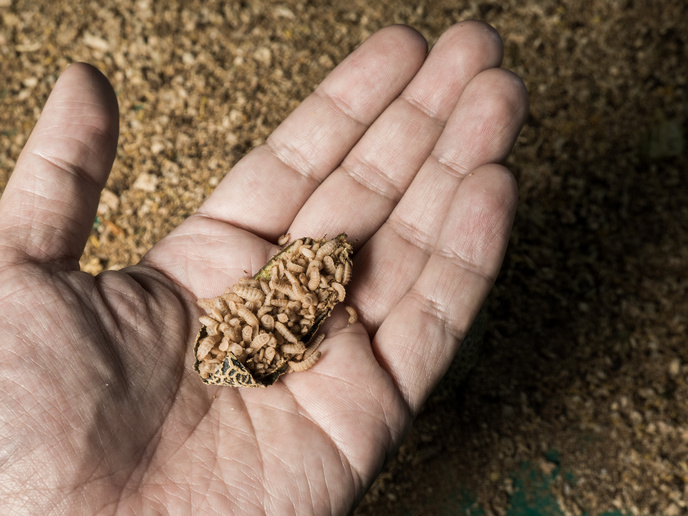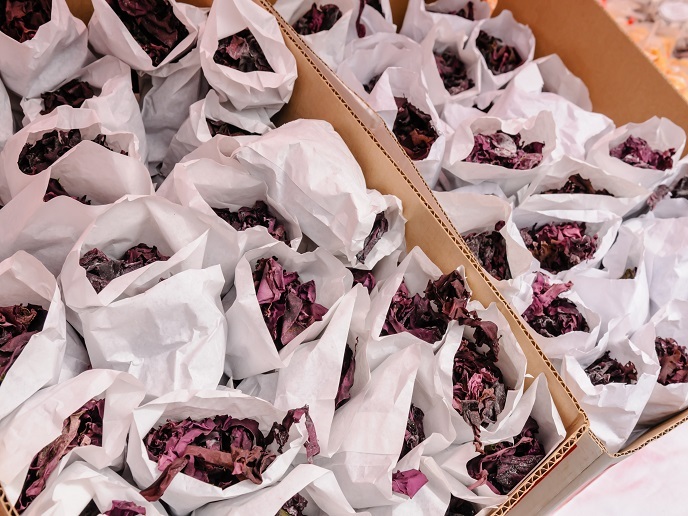Insect-derived protein comes one step closer to the mass market
Insects as an alternative source of protein could plug the ever-widening gap between the needs of a growing population and traditional methods of sustainable farming. In our drive for a more closed loop of production by limiting waste and maximising recycling, could food and feed generated from insects be a missing link? SUSINCHAIN(opens in new window) feels that insects can play an important role in providing us with alternative sources of protein, and they have come up with a series of evidence-driven answers to many of the questions that have held the sector back. The project, which received support from the EU, brought together industry, government and academia to examine risk management strategies, develop processing technologies, analyse permitted substrates and consider business models.
Legal limits of contaminants in substrates for insect farming
“In the experimental part of the SUSINCHAIN project we used the legal limits for contaminants in common feed commodities to determine whether contaminants were transferred to farmed insects when they feed on what are called ‘substrates’,” explains Teun Veldkamp, who is based at Wageningen University and Research(opens in new window), the Netherlands. The project found that accumulation, or even transfer, of toxins and pathogens, such as mycotoxins, was minimal. They propose this means legal limits in substrates used for insect farming could be higher. “Low-cost substrates should be used in the near future, when it is proven that these substrates are safe. Our work helped establish this and a switch to these lower-cost alternatives would make the chain much more sustainable and cost-effective. At the moment, substrates that meet the standards set for other foods, such as wheat, are costly,” adds Veldkamp. “Standards set for other agricultural products are unnecessarily high for insect food. Proving this is the case, means we could open up cheaper ‘food’ which makes the whole process more cost-effective and therefore, attractive to business.”
Safety first in insect farming
Much of the research done by the project focused on optimising existing processes. Several experiments were performed on nutritional quality and physical characteristics of substrates, insect transport, and management of insect diseases and pest species. A database of substrate pre-treatments was constructed, and feed experiments performed. “The work we have done on transport, diseases and pest species will result in healthier insects and a safer rearing environment,” says Veldkamp. For large-scale insect rearing, the project established the chemical composition and nutritional needs per insect species to identify knowledge gaps and conduct experiments to close loops and increase sustainability. Novel standardised protocols were drafted(opens in new window), ensuring comparability of results of academia and farmers. The project also worked with a bottom-up approach, exploring what insect farmers were doing that worked well and sharing best practice(opens in new window).
Opening up the market for insect-based protein
It’s not only about the production processes; marketing barriers were also considered. “We know that we can improve the efficiency of the production and establish safety parameters – but if no one is buying the product then we have a real problem with the sustainability of the industry,” acknowledges Veldkamp. With this firmly in mind, the SUSINCHAIN project set about identifying the technological, regulatory, cultural and behavioural barriers to upscaling the European insect value chain, together with strategies to overcome these barriers. This is part of a suite of work being done by the EU to boost the uptake of insect protein. Desk research, followed by a series of in-depth interviews and workshops with various groups of stakeholders, was carried out to establish bottle necks to production, and public perception. This was conducted alongside the establishment of two living labs, involving insect farmers, which were set up to take a real-time look at what works and what doesn’t.
Upscaling the insect-protein sector in Europe
Veldkamp is proud to say that: “The SUSINCHAIN project has contributed with significant building blocks for further upscaling the insect sector in Europe.” But he feels that the work being done to really make the most of this protein source is being undermined by a shift of focus. “European insect-related research has become more fragmented, and insects are being incorporated as one of multiple protein sources in projects on sustainable food and feed.” He feels that for a truly effective approach, projects that focus purely on the key barriers to the uptake of insect products are the way forward.







